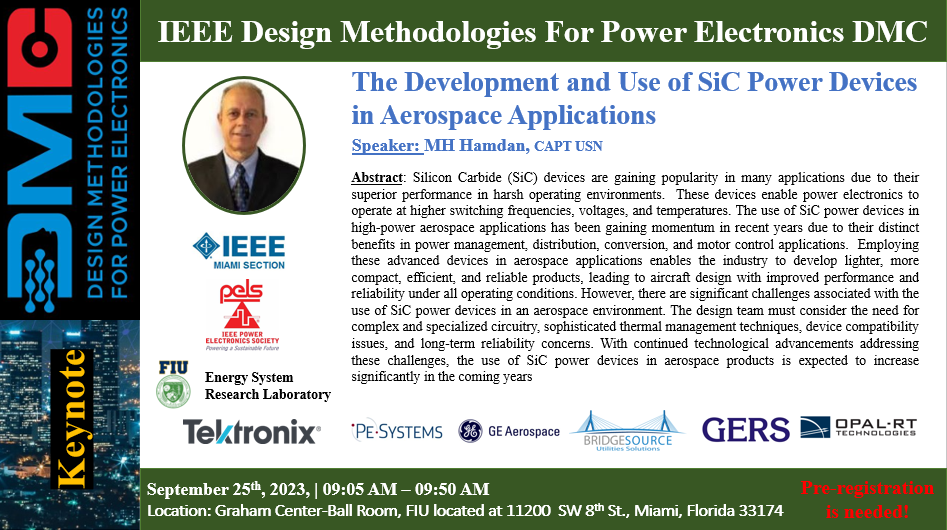The Development and Use of SiC Power Devices in Aerospace Applications

Silicon Carbide (SiC) devices are gaining popularity in many applications due to their superior performance in harsh operating environments. These devices enable power electronics to operate at higher switching frequencies, voltages, and temperatures. The use of SiC power devices in high-power aerospace applications has been gaining momentum in recent years due to their distinct benefits in power management, distribution, conversion, and motor control applications. Employing these advanced devices in aerospace applications enables the industry to develop lighter, more compact, efficient, and reliable products, leading to aircraft design with improved performance and reliability under all operating conditions. However, there are significant challenges associated with the use of SiC power devices in an aerospace environment. The design team must consider the need for complex and specialized circuitry, sophisticated thermal management techniques, device compatibility issues, and long-term reliability concerns. With continued technological advancements addressing these challenges, the use of SiC power devices in aerospace products is expected to increase significantly in the coming years.
Date and Time
Location
Hosts
Registration
-
 Add Event to Calendar
Add Event to Calendar
- Graham Center-Ball Room, FIU located at 11200 SW 8th St., Miami, Florida 33174
- Miami, Florida
- United States 33174
- Room Number: GC Ball room
- Click here for Map
Speakers
 MH Hamdan
MH Hamdan
The Development and Use of SiC Power Devices in Aerospace Applications
Silicon Carbide (SiC) devices are gaining popularity in many applications due to their superior performance in harsh operating environments. These devices enable power electronics to operate at higher switching frequencies, voltages, and temperatures. The use of SiC power devices in high-power aerospace applications has been gaining momentum in recent years due to their distinct benefits in power management, distribution, conversion, and motor control applications. Employing these advanced devices in aerospace applications enables the industry to develop lighter, more compact, efficient, and reliable products, leading to aircraft design with improved performance and reliability under all operating conditions. However, there are significant challenges associated with the use of SiC power devices in an aerospace environment. The design team must consider the need for complex and specialized circuitry, sophisticated thermal management techniques, device compatibility issues, and long-term reliability concerns. With continued technological advancements addressing these challenges, the use of SiC power devices in aerospace products is expected to increase significantly in the coming years.
Biography:
MH Hamdan is the GE Aerospace Director of Engineering for the Power Conversion and Control Business. He leads the new product development (NPI) engineering teams in Long Island, NY and Pompano Beach, FL. Prior to his current role, Mr. Hamdan held several engineering and project management positions. Most recently, he served as the GE Aerospace Principal Engineer for Energy Storage and Conversion.
Throughout his career at GE Aerospace, Mr. Hamdan has designed, developed, and qualified thirty power conversion and control products for multiple airborne applications.
Currently, Mr. Hamdan serving on two SAE committees, contributing to the development of aerospace standards for Lithium Battery Packaging Performance and Energy Storage/Charging of Electric Aircraft. Mr. Hamdan holds a B.E.E.E degree in Electrical Engineering from the State University of New York at Stony Brook, NY and MBA degree from Dowling Collage in Oakdale, NY.
